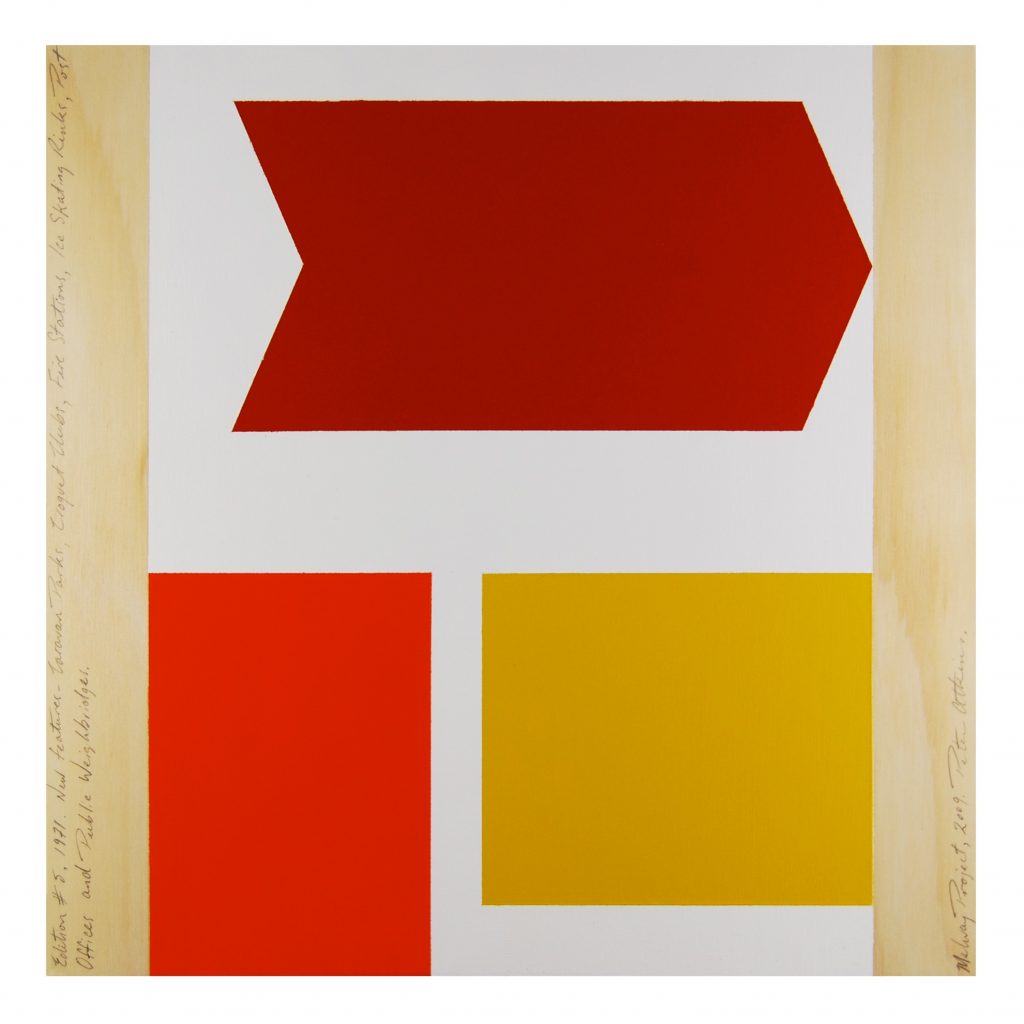Peter Atkins, 2009, Melway Project, Readymade Abstraction
Summary
Artist Statement
When I began to formulate ideas for this commission to create a series of paintings for the stairwell, my focus was primarily on using the City of Melbourne map as a starting point. The original idea was to traverse the entire territory of the City of Melbourne, walking the circumference and then spiralling my way into the city centre. My plan was to collect and document ready-made abstract forms as visual references for my paintings.
As I thought more about the city itself a second concept developed. I was researching Melbourne’s maps and boundaries in the State Library of Victoria and came across an early edition of a Melway ‘Greater Melbourne’ directory. There was something about the cover that seemed familiar, though I had never seen that edition before. I searched the library and the internet and collated the entire set of Melway directories, from 1966 to 2008. Each new edition catalogued the city’s growth: in 1969, house numbers were added; in 1977, RSLs and kindergartens were included; in 1979, the change to metric occurred; in 1982, bicycle paths were introduced; in 1994, CityLink was included, and so on.
As the concept developed, I realised I could appropriate the various cover images as the reference material for the paintings in this project. These directories are not only laden with historical references to Melbourne but are also in themselves reminders of who we once were and where we have come from. There is a wonderful utilitarian aspect to them as functional products, but in our collective consciousness they are also tactile objects, as most Melburnians have handled them at some point to navigate the city.
As people ascend the staircase from the ground floor they will be able to read the titles as a narrative of the evolving city. They will also be pointed from one work to the next, up the stairs, by the large red directional arrow present on each Melway cover. But these works are also intended to stand alone, as compelling paintings in their own right, referencing beautiful modernist graphic design from the 1960s onwards.
Peter Atkins
